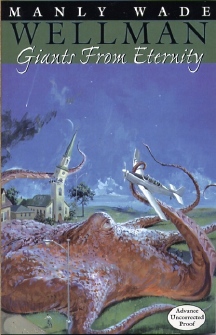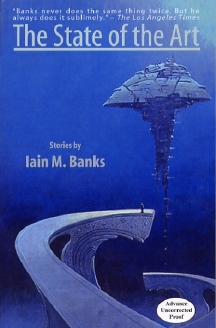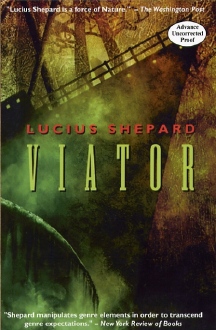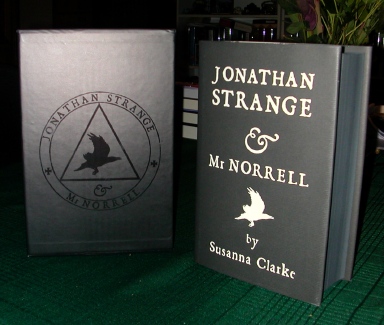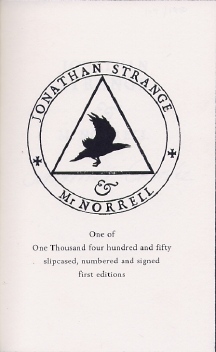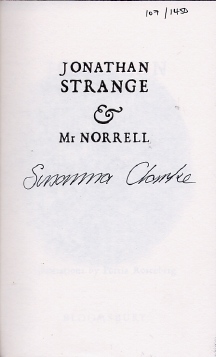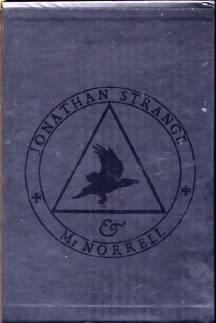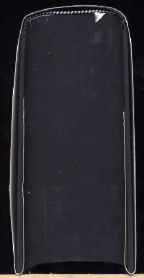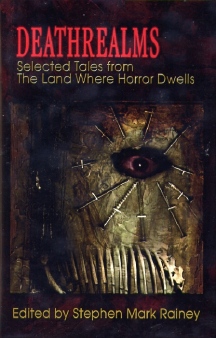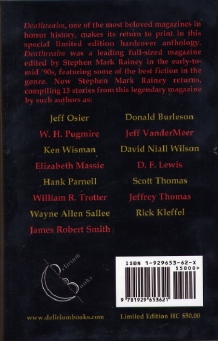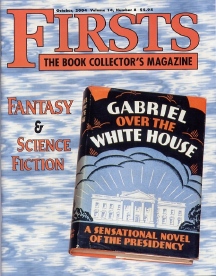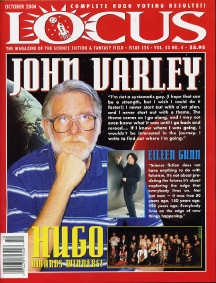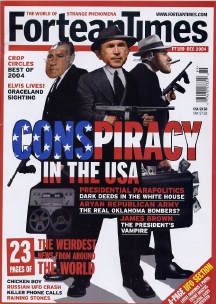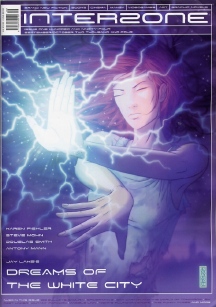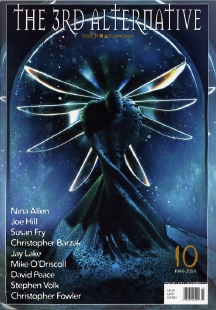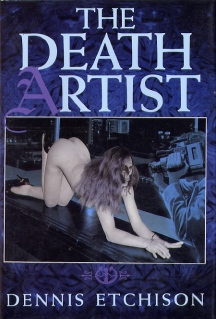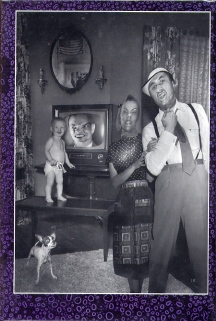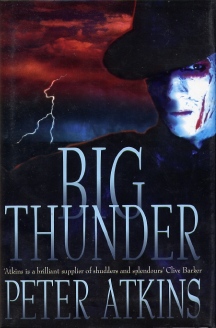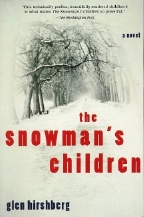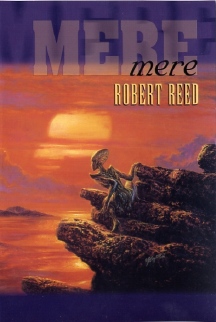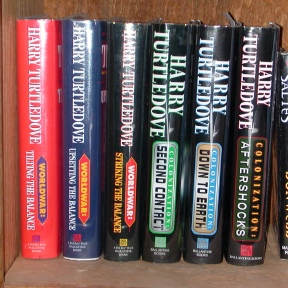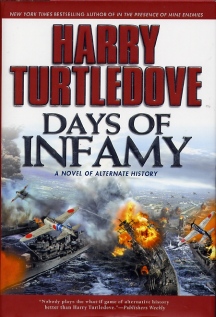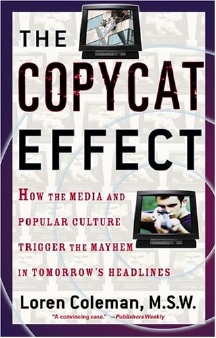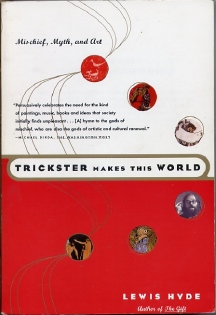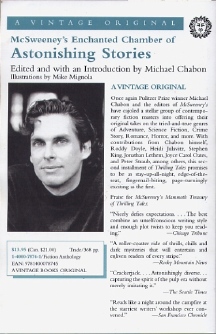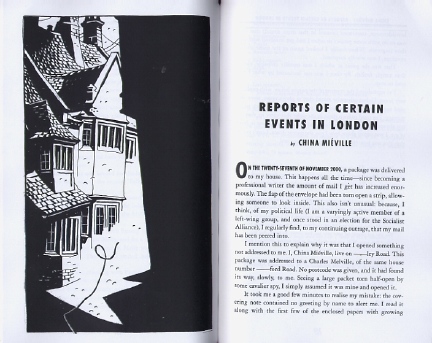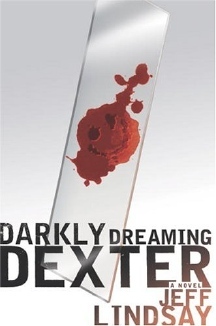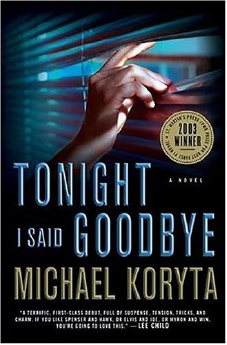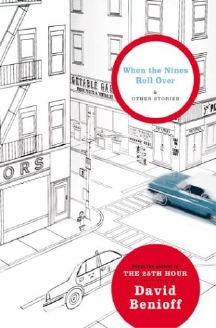|
|
|
This Just In...News from the Agony Column
|
10-15-04: Viator by Lucius Shepard, Giants from Eternity by Manley Wade Wellman, and The State of the Art by Iain M. Banks(updated 10-20-04) |
|||||||||
| Night
Shade's Small Books One of the problems with lots of science fiction, fantasy and horror releases is that they are so damn big. Just about anything you choose involves a significant commitment of time. You pick up that five or six hundred page book, and your reading is set for the next couple of weeks. So it's especially nice to see that the latest crop of releases from Night Shade Books trends in the opposite direction, the "less is more" direction. These books are not multi-month commitments; they're overnight flings, and I for one, am grateful.
That same approach is what appears to make 'Giants from Eternity' so appealing. Lest you make the same mistake I did, the titular giants are not a bunch of huge, tentacled monsters like that illustrated on the effective cover by Vincent Di Fate. The Giants from Eternity are instead those scientists called in to fight the monsters. Rather than the Lovecraftian feel you might be expecting, Wellman is instead almost anti-Lovecraftian. He's up-front and anti-mysterious. 'Giants from Eternity' actually might have been a template for the (in)famous Steve McQueen movie, 'The Blob'. When a meteor lands on a farm, out of it comes oozing a blood-red blight. It engulfs the farm animals, a farm hand and then looks to be unstoppable. And yes, you will see the giant, tentacled critter pulling planes from the skies. Earth's only hope is the Giants from Eternity, who count among their number Louis Pasteur and Madame Curie. Only the French can save America! It must be a science fiction novel! As with their acclaimed The Lost Wellman, series editor and Wellman scholar Jeremiah Rickert is working to present an organized, textually accurate set of those pieces of Wellman's work that have languished for decades. 'Giants from Eternity' first appeared in the July 1939 issue of Startling Stories. Here it tops out at a slim, trim 123 pages, and is accompanied by 'The Timeless Tomorrow' (another 33 pages), which first ran in the December 1947 issue of Thrilling Wonder Stories. Having actually picked up the book, I have to say that if you're at all interested in the origins of pulp and genre fiction -- and if you enjoy a good old-fashioned earth-scientists versus alien monsters story, you'll really enjoy this book. It won't wear out its welcome but it will pull you back to the days when you were just a pup, and remind you why you started reading in the first place. That's the kind of reminder I could use more often. [Updated 10-20-04; updated text in bold.]
But now it's soon to be made available again in an attractive hardcover edition, with the title novella, all the stories and the addition of an essay, "Notes on the Culture" that was not included in either previous edition. Even as I write, I'm reading Bank's latest novel, 'The Algebraist', which happens to be the first Banks work I've ever read. Funny how a reader develops lacunae in their reading, isn't it? But when Banks was breaking big in the UK, I had given up on science fiction (with the exception of Stanislaw Lem and Philip K. Dick), and was mostly involved in reading horror. By the time I was interested in SF again, Banks had six books in 'The Culture' series. I bought the books -- both in paperback and more recently in a first edition hardcover -- but I never got round to reading Banks until his latest, non-Culture book. Though I'm not done yet, I'm really enjoying 'The Algebraist', which I'm finding to be rather different than I expected. For while Banks writes high-flying space opera, filled with the aliens and wormholes that are de rigueur in that genre, he's also writing a subversive satire of our sad times. And though I don’t know this for a fact, I've got to suspect that the same is true of The Culture novels, and of the short stories in this collection. 'The State of the Art' includes 8 short stories. The title story is a Culture novella that features characters from other Banks novels, but it's set on Earth in 1977. This collection isn't all Culture stories, however. In fact, it includes the very-helpful-to-this-Banks-novice bit of non-fiction, 'A Few Notes on The Culture', not available in either previous edition of this book. For while I do know that Banks has written a huge and important science fiction series about 'The Culture', that's all I know. The opportunity to delve into the series with a helpful guide written by the author in 1994, after he had a firm footing in his complex creation, is not to be missed. For once, I can start a long series knowing there are plenty of titles, prepared with a story set in the distant past of the distant future, and with a guidebook to hand. Sometimes it's actually good to discover a series long after it has achieved greatness. You may be late to the party, but you know in advance, that it's going to be one hell of a party.
Viator is a freighter ship that ran aground on a remote section of the Alaskan coast nearly twenty years ago. It's remained untouched until Thomas Wilander is hired to determine its worth for salvage. Wilander and his three men arrive to do a simple job, but they become increasingly and unpleasantly obsessed with Viator. Soon it becomes their world, and the world beyond exists only in relation to the ship. Disturbing dreams afflict Wilander, who seeks the help of a woman in a nearby village. But it may be too late. Frankly, it almost does not matter what Lucius Shepard writes about, because whatever he writes about, he writes about it with compelling skill. Of course, this novel sounds a bit reminiscent of 'The Thing', and that's got to be a good sign -- depending on how you feel about 'The Thing' in any of its many formats. The original short story, by John W. Campbell, was a science fictional take on 'Ten Little Indians'. The original movie by Christian Nyby and Howard Hawks was a potent cold-war fable about namby-pamby scientist accommodators who almost let the monster (communism) run amuck until action-hero military men take charge and electrocute James Arness in his signature role as the "giant carrot". John Carpenter's 1982 remake was a powerful tale of existential angst in which any of the characters might or might not simply, horrifically, peel open to reveal a monster within. All of these versions offer a setting similar to that of 'Viator'; men in an arctic landscape, trying to recover a lost artifact. Men behaving strangely. Well, at least I consider the behavior strange, and my standards are notoriously lax in that regard. |
|
10-14-04: Opening Up the Limited Edition of Jonathan Strange and Mr Norrell; DeathRealms: Stories From the Land Where Horror Dwells Edited by Stephen Mark Rainey |
|||||||||||
Don't
Touch That Wrapper!
You can read the novel easily enough in the trade edition. Chances are, you got yours signed on Ms. Clarke's recent tour. Hopefully, you've already read and enjoyed this lush, immersive work. But now your limited edition has arrived from Bloomsbury, and you want to know -- you desperately want to know -- what it looks like inside that wrapper. But you also want to leave the wrapper on, knowing that about seven years from now, when Susanna Clarke is a household name, that wrapped up, limited first edition will be worth enough on the open market to buy a decent new car. What do you do?
That's why you come to this website, because like some of my readers, I managed to a get a couple of these editions and I, like you, just had to open it up and see what it looked like. In a nutshell, what you've got is a very nicely done version of the standard edition with a satin bookmark, black page edges and two extra pages, a 'Statement of Limitation' page, and a signature page. The book is slipcased with a very nicely art-directed slipcase that's made out of fairly thin cardboard. This is a fine limited edition for a major publisher. It offers the basic amenities of a limited edition; signature, bookmark and slipcase. Readers will have to admit that the book itself is, even in the trade edition, a better-than-average production, with illustrations and decent binding.
You'll note that the limitation page states that the limited was 1,450 copies, 450 copies of which, I believe, sold on the Internet, and probably largely to my readers. I'm told the extra thousand copies are available via Waterstones, but the Waterstones website has them for sale as "used/new", starting well above the price we who got in first paid. We paid £30.00, and they're going via Waterstones/*.co.uk for £210.00. I've seen some as high as $1,350.00, though as I write the highest price via bookfinder is $894.00. The bottom line is that if you laid in a couple of extra copies and want to cash out now, you'll get about seven to ten times the price you paid. Not a bad investment. Alas, I'm unwilling to sell now. Having spoken with the author, I'm inclined to hang on to these books as keepsakes of a fine conversation. Though eventually, when the books take over the house, I may feel differently! Unless, of course, I've laid my hands on some of the tomes that Mr Norrell had access to. Then perhaps I can extend my library in the British tradition of police phone booths, making it larger on the inside than it is on the outside. |
|||||||||||
From Don't
Clean the Aquarium to Embarrassment & Revenge
And so it was with 'Embarrassment & Revenge', a story that stemmed from two subsets of my personal experience. In the first case, actually -- now that I think about it -- those steel vats did play a part to inspire the story. That part would be that I was working in environments of 5 and 10 degrees centigrade, where the air was laden with alcohol fumes. Didn't do a thing for my good health. In fact, after being sick for a week with pneumonia, I ended up being plopped right back in the coldest digs, having had what my supervisors at the time thought was something of a vacation. To a certain extent my lungs never recovered, and I spent the next few years coughing up ever more interesting things. It struck me that one day, I might cough up something that would try to get away, and that perhaps I could capture it and hand it to a doctor. That image, of me handing something from my lungs to a doctor in a specimen jar hung about in my fevered brain as I read through 'The Books of Blood', the DAW Philip K. Dick novels and Dennis Etchison's Scream/Press collections.
I decided to sit down and write a story that combined those three separate images and emotions, and the result was 'Embarrassment & Revenge'. It took some time, but I finally found a home for it in Mark Rainey's great small press magazine, 'DeathRealm', where it was superbly published and illustrated. I later showed it to a co-worker who gave it my favorite review of all time. After reading the story, he handed the magazine back to me and said, "Rick, seek professional help." Cut to what -- 15 years later? -- and Mark's now publishing a "Best of" his justly famous magazine with Delirium Books. 'Deathrealms: Selected Tales from The Land Where Horror Dwells' (Delirium Books ; October 14, 2004; $50.00/Limited Edition) collects the work of a lot of other writers besides YT. They include: Jess Osier, W. H. Pugmire, Ken Wisman, Elizabeth Massie, William R. Trotter, Wayne Allen Sallee, James Robert Smith, Donald Burleson, Jeff VanderMeer, David Niall Wilson, D. F. Lewis, Scott Thomas, and Jeffrey Thomas. See? I was in pretty great company. You can buy the book directly from the publisher at their website, or via the usual on-line sources. Hopefully, with your help, we can sell this edition out and pave the way for a Del Rey or Tor Books edition. But that need not come to pass. Perhaps the result will be one of those online-petitions, requesting that I finally, after all these years, seek professional help.
|
|
10-13-04: Firsts on F&SF, Fortean Times on Conspiracy USA, Locus Talks to John Varley and Eileen Gunn, and TTA Press's Jay Lake-o-Rama in The 3rd Alternative Issue 39 and Interzone Reborn 194 |
|||||||||||||||
A
Periodic Table of the Elements of Style
I first met reviewer, columnist and writer Terry D'Auray via her gift to me of an SF&F-themed issue of 'Firsts' Magazine. 'Firsts' is, as it clearly says on the cover, a magazine for book collectors, and reading it gives you an idea that there's a whole world out there beyond my own little corner of the block. 'Firsts' is published on a quirky ten-months-a-year schedule, monthly except for July and August. Every October, they publish an issue dedicated to Fantasy, Science Fiction and Horror. Each November, it's mystery fiction. They've been publishing since 1991, and you can order just about every issue online from their clean and easy website. Take a look at the masthead and you'll see at least one name that should be quite familiar to F&SF fans, LW Currey, the esteemed seller of ultra-high-cost ultra-rare collectible science fiction and fantasy. They're the folks you go to when your inheritance comes in and you decide you want to own all the Bradbury, Clarke or Heinlein books in pristine first editions. The SF&F-themed issue for this year is something of a mixed bag. Each issue features a 'Books Into Film' article about a book translated into a film, and that's why 'Gabriel Over the White House' is on the cover here. It's a pretty obscure choice, especially given that publisher Robin H. Smiley calls the both the book and film "severely flawed". And while it does have a certain fantasy element, it's a bit off-putting for the intended audience of the issue. But you can and should get over it. There's a world of very offbeat information inside here. There are two major articles in here that are of definite interest to the science fiction and fantasy readers. One is a look at the work of Jack Williamson. Writer Richard Hauptmann managed to move near where Williamson lives, and from Williamson himself heard the riveting tale of a Grandmaster writer who came of age in the 1930's. You get more than ten nicely laid-out pages of Willamson's life story and publishing career, amply illustrated with B&W reproduction of every book he published. You start with a farmboy writer in 1925 and end up with a Grandmaster at the turn of the century. In between, you get a four page checklist of first editions, which top out at a very reasonable $400. It's thorough, entertaining and just a bit obscure. While you might think that 'Auction Report: The Neville Auction at Sotheby's' is not necessarily of interest, you'd be wrong. It looks like you'll need in the range of $30K to pick up something like a first of Dracula inscribed to the author of The Prizoner of Zenda (Anthony Hope), or a first edition of H. G. Wells When the Sleeper Wakes inscribed to Arthur Conan Doyle. You might have enough spare change to buy a few of those Williamsons from LW Currey. The showpiece article is Stephanie Howlett-West's article on the 'Best Science Fiction Fantasy Horror of 2003'. Readers of this column will find some surprises amidst the expected titles. VanderMeer, Simmons, Stross and Fforde are there; Richard Morgan is absent. There's a definite inclination towards fantasy with Mercedes Lackey and a whole batch of YA fiction. I'll give the writer this; it's certainly an unusual selection, and makes the magazine worth buying. Of course, some of those back issues look particularly interesting as well; I'm very close to sending away for their guide to Dark Harvest books, one of the great horror small-press publishers of the 1980's. They were probably the first to publish Simmons' work in a limited format. Of course, one of the major attractions of a magazine such as this is the advertisers. The bookstores that advertise in 'Firsts' will suck your bank account dry if you let yourself go. And that's why you should -- or should not buy and read a copy of 'Firsts'.
This is the Locus Hugo Awards issue, so you'll see a page full of tiny color shots of all your favorite writers at the ceremony and an article giving you the low-down. It's always interesting to see the writers behind the fiction you enjoy; disconcerting sometimes, but interesting. And you get a news section with headlines like: "Clarke Accepts Heinlein Award", and a picture of Sir Arthur C. Clarke holding the plaque. It's a funny old world, innit? Then there are the pages and pages of reviews and advertisements for the new books by all your favorite authors, including a very nice EOS spread that features Clive Barker, Neal Stephenson, Terry Pratchett, Dave Duncan and Madeline Howard. The back cover features some new Tor titles, including Ellen Datlow's certain-to-win awards 'The Dark: New Ghost Stories'. Glen Hirshberg and Kelly Link headline this collection, which should be headed to all your shelves. As should the new Locus.
Once you get inside, though, it gets even better. The crop circles are pretty much jaw-dropping works of art. I've resisted the temptation to scan them. You want to see them for yourself in the magazine. It's positively mind-boggling what people get up to. You can actually look at them at photographer Steve Alexander's website, Temporary Temples. Do so; it's just amazing stuff. The Tunguska Meteor strike gets another very Fortean look at the top of the issue. That's because a researcher has decided that it was clearly not a meteor or comet, but instead an ET crash site. "As Charles Fort observed, 'Anybody who is convinced that there are relics upon Mount Ararat has only to climb Mount Ararat, and he must find something that can be said to be part of Noah's Ark, petrified perhaps.'" And not surprisingly, the same principle apples here. But the three centerpiece article here are all you need to keep your mind engaged in a netherworld as creative as that of any SF&F writer. 'Little White House Lies' traces conspiracy theories in the White House, from the 1865 Group Of Eight who killed Lincoln to Lone Gunman who killed Kennedy to Bush V1 and beyond. I have to confess that I find myself falling ever more prone to magical thinking with regards to all political information disseminated by the mass media. What I once might have dismissed as cockamamie BS now seems unpleasantly within the realms of possibility. I guess that what has happened is that in the last four years, the so-call "realms of possibility" have opened up wide. What were once wild hairs are now getting Grecian Formula. Insanity seems to mature just like everything else. "Be afraid -- be very afraid" was once a great horror movie tag-line. Now it's our national motto. 'White Noise' offers a disturbing in-depth look at 'Aryan Republican Army', the kind of violent domestic terrorists that have faded into the background with all the foreign terrorists popping up in the foreground. It's unusually sobering material for FT. But don’t worry. 'The President's Vampire' takes a page from Fort's Wild Talents and looks again at the story of a man called a vampire back in 1866 whose death-sentence was commuted by no less than President Andrew Johnson. As FT points out, today the man would be called a serial killer, but New England was, back then a hotbed of fundamentalist believers. The article gives the readers cursed ships, burned organs and lurid illustrations that will haunt your dreams. All just a month's work for the 'Fortean Times'! And finally, the big deal news this month: the transfer of Interzone from the stewardship of David Pringle to Andy Cox, and the accompanying simultaneous release of Interzone 194 and The Third Alternative. So let me now start with the most contentious item, Interzone 194. It certainly announces itself as different from the get-go. Mind, I've had no previous experience with Interzone other than the issues that Alastair Reynolds sent me with his stories, which were certainly quite nice but had a rather different look and feel. But let me dismiss some early complaints about typefaces, fonts and layouts.
So now to the contents, which I've just finished going over rather more thoroughly than is usually my habit. For non-fiction, I can comment on some of the contents. David Langford's 'Ansible Link' news column is as entertaining as it ever was. You can't mess up a classic, and they haven't done so. Nick Lowe's 'Mutant Popcorn' savages films from the C-list 'Thunderbirds' movie to the A-list 'Spiderman 2'. You might not agree with his opinions, but they're definitely a hoot to read. If you are of a mind to read graphic novels, then you could hardly have a better guide than Peter Crowther. 'The Funny Pages' makes me interested in the titles he covers. Trust me, that's high praise. Perhaps the issue's most essential reading comes in the form of non-fiction, in the form of Elizabeth Counihan's interview with David Pringle. If you look where you've been you have a hope of knowing where you'll go. With Counihan and Pringle's conversation, you can trace a trajectory for the future of the magazine you hold in your hands. While I'll refrain from commenting on the reviews -- I've written five for this issue -- I'll take this opportunity to commend Andy on the selection of titles he's chosen to have reviewed. The ones I didn’t review are alas, more additions to a queue that threatens to knock a chunk off the lunar surface. The bottom line is that if your interest in Interzone is primarily for the non-fiction, it looks to be quite solid, even if I get the boot. Maybe especially if I get the boot! Still, Interzone is known for the fiction, for the many authors who have launched or solidified careers within its pages. So I took an especially close look at as many stories as I could cram into my brain. Steve Mohn opens the issue with 'Song of the Earth', a strongly science-fictional story for those who might have suspected that Interzone would teeter into the more fantastic realms of Cox's 'The Third Alternative'. In toto, I did find it a bit obscure, but the reading experience was intense and visionary. One suspects that there is a novel behind the story, which exhibits strong world-building. Karen D. Fischler's 'Someone Else' is a powerful science fiction tale, with a simple concept at the core that is revealed with wonderful, excellent writing. I'll be looking for more of her work wherever I can find it. Jay Lake's cover story, 'Dreams of the White City' deserves the fine work of the illustrator. It's complex, longish but fully accessible, and yet Lake retains a lovely air of mystery. Much of this is down to his polished, poetic prose, a joy to read. But for me, the real capper was the story that finishes the issue, Anthony Mann's 'Air Cube'. It has a wonky simplicity that captures the reader in a sideways world and does not let go. Mann is very funny here, offering a story with a sharp satiric edge. The layout and illustration help create an air of authenticity that lends the story even more power. I've reserved Douglas Smith's 'Enlightenment' for a mellow afternoon on the porch. The quality of the rest of the fiction here assures me that it will be good. The verdict is obvious. Interzone is clearly in good, if different hands. Cox does show his own unusual slant here, but he doesn't distort the reality of Interzone. It's still a top-drawer, high-quality magazine well worth the rather pricey subscription rates here in the States.
Paula Guran's Guest Editorial is titled "The H-Word", but I don’t think anyone is fooled. She's on about horror, and how, like myself back in the day, she thought it was the be-all and the end-all of fiction, in that -- at least this is how I would put it -- it allowed and encouraged experimentation of all types; horror could be anything, SF, fantasy, crime fiction, literary fiction, hell it could even be 'moment of startling insight fiction' by the likes of Michael Chabon! Changes are afoot in this issue of TTA, and they seem to be fine. Now, I've enjoyed reading Christopher Fowler since I first picked up a cheap paperback of 'City Jitters', and while I'll, be sad to see him take a vacation from his film reviewing duties, Stephen Volk is certainly an all-star fill-in who blazes his own path with style and verve. To make up for Fowler's absence in the film-reviewing gig, he's interviewed by Sandy Auden. Peter Tennant reviews yet another crop of novels that I'd like to read, and some that are actually already in my to-be-read-pile. Thankfully, he makes them sound as good as I hoped them to be. An interview with David Peace put him squarely on my TBR list as well, and I suspect that perhaps even Terry D'Auray might want to sample his stuff. It's sounds like gritty, cracking good british crime fiction with a nice psychotic streak run through it. John Paul Catton contributes a column on the dark side of Japanese culture that begs the question as to whether or not there's a light side. Allen Ashley's 'The Dodo has Landed' is oddly enough, a column about crisps, or as we in the States properly call them, potato chips. From Ashely's description, it sounds as if they’ve got some perfectly hideous things hiding in bags over there, which he, perversely, loves. Yikes! Somebody needs to fly the man out here to the left coast, where you can get freshly made, still warm potato chips in a gorgeous Santa Cruz restaurant. Leading off the fiction in this issue -- or not starting the issue, but leading in the sense that I'm mentioning him first -- is Jay Lake, whose story 'Daddy's Caliban' gives readers a chance who subscribe to both to calibrate the difference between Interzone and The Third Alternative. Actually leading off the issue is Nina Allan's 'Monsters', an auspicious title if you’re a monster-hound like me. Also included are: 'The Black Phone' by Joe Hill, 'If I Should Wake Before I Die' by Mike O'Driscoll, 'Father Gregory's Relic', by Susan Fry, and 'A Resurrection Artist' by Christopher Barzak. TTA utilizes a variety of artists with a variety of results. Susan Fry and Christopher Fowler bear the weight of being printed white-on-black bravely, even almost, nicely. David Broughton, Robert Dunn, Michael J. King, Vincent Chong, Jim Ordolis and Joachim Luetke provide effective art for the rest of the stories. Now, I could get all didactic about the nuances of each of these magazines, but the bottom line is that Interzone and TTA handle left- and right-brain fiction superlatively. Getting them both in one plastic bag, shipped overseas at a cost that might cause you to briefly catch your breath is well worth the all the moments of startling insight you'll have to endure as you consider the cost. Better yet, when you’re done you can write a story about 'em and send it to McSweeney's. Don't tell them I sent you, however. |
|
10-12-04: Glen Hirshberg, Dennis Etchison and Peter Atkins Launch the Rolling Darkness Review; Robert Reed's 'Mere'; Harry Turtledove's 'Days of Infamy' |
||||||||||||
Ghost
Stories for the 21st Century
According to Glen, "The whole idea of the Rolling Darkness Review, as far as we're concerned, is eventually to turn this into an annual Halloween performance event, booked in theaters, with sets and music." This year, these three writers are appearing at spots up and down the California coast reading their fiction. First and foremost, readers need to show up at these places and on these dates. October 16th-- Dark Delicacies, Burbank, Ca. October 20th-- Dark Carnival, Berkeley, Ca. October 21st-- Borderlands, San Francisco, Ca. October 22nd-- Mysterious Galaxy, San Diego, Ca. October 23rd-- Mystery & Imagination, Glendale, Ca.
Perhaps a brief re-cap is in order. I don't know what much I can say about Dennis Etchison other than that I own every single short story collection that he's written. If you've never read Etchison, and if you love great books, you need to lay your hands on the three Scream/Press editions of his work; 'The Dark Country', 'Red Dreams' and 'The Blood Kiss', and Dreamhaven Books copy of 'The Death Artist'. Etchison's latest collection is 'Got to Kill Them All', forthcoming from Cemetery Dance. He's also written numerous novels; again, your best bet is to find 'Darkside' from Dreamhaven, or 'Double Edge' from Pumpkin Books. But it happens that you may know him best from his novelizations. Under the name of Jack Martin, he's chosen to write novels based on films by directors he admires. That would include a novelization of John Carpenter's 'The Fog' and one of David Cronenburg's 'Videodrome'. But; trust me. Score those Scream/Press or Dreamhaven books. To my mind, they're up there as some of the finest books you can find.
But wait --there more! Atkins wrote the screenplay for and directed one of the few horror movies that was so horrifying that when watching it first on videotape back I can barely remember being that young, I was forced to shut the tape off after a particularly scraping scene of horror. That movie is 'Hellbound: Hellraiser II', which I find to be a remarkable movie filled with scenes of authentically awesome terror. But wait -- there's more! Because Atkins is also one half of the team behind Hill House Books, probably the premiere publisher of limited edition fiction currently producing books. So perhaps this might be a good time to mention that Hill House is not only about to ship copies of the second of their incredible Neal Stephenson limited editions, 'The Confusion'. They're also about to ship 'Neil Gaiman: A Screenplay'. I have no idea what this is; potentially it's a screenplay for Neil's forthcoming film 'MirrorMask'. Or, perhaps it's something completely different. Whatever it might be, it's certainly an Important Publishing Event. And the Rolling Darkness Review is your chance to meet the talented writer and publisher behind it.
What I read in 'The Two Sams' was an undeniable home run novella. It strikes to the heart of both marriage and parenthood. It will send a dart deep into any reader who might be one, the other or both. Be prepared when you read Hirshberg. He's an authentic major talent. Make sure your emotional life is somewhat calm. It may not be afterwards. Thus updated, readers can see why I insist that if possible, they make it to these shows. This is a live reading of ghost stories, by the writers themselves. This is the perfect distillation of cognitive dissonance. Speakers for the dead are appearing live. Don't wait for the afterlife, where you may be read from instead of read to. |
||||||||||||
A
'Marrow' Novelette from Golden Gryphon
'Mere' is part of a sequence that includes the stories 'River of the Queen' and 'Night of Time' as well as the novel 'Marrow'. The character plays a pivotal part in the forthcoming Marrow novel, 'The Well of Stars'. So all this is great news to current readers of Reed's work. But what makes 'Mere' so attractive to new readers is that the chapbook includes a 5,000-word Afterword in which Reed details the history of his 'Marrow' universe. He places the stories and novels in context and fleshes out the details. What 'Mere' offers readers like myself is a chance to check out both sides of Reed's creative output. We can read the prose and experience the stand-alone story in 'Mere' as a story. Great prose conquers all. But we can also see some of the clockwork behind Reed's creation from his point of view and allow that to enhance our further reading, should the work suit our tastes. This particular release really ups the ante in the writer's favor. Readers can get a taste of his style and substance at a very reasonable price in a wonderful and collectible format, and find out if the rest is right for you. Once again, the small press, in the guise of Golden Gryphon, is doing something that the major publishers cannot do -- benefiting the writer and ultimately reader. The buyer. You -- the customer. Getting the world out you might not hear about. Along with Kim Stanley Robinson, always a help! |
||||||||||||
Variations on a Theme of Alternate History
One of the most questioned acts was of course our decision to drop the atomic bomb on Hiroshima. Many contend that Japan was already on the ropes at that point. Whatever the case, history stands as it was -- except in the minds of alternate historians.
So there should be little surprise that he ups the ante for the Pacific war in his latest novel, 'Days of Infamy'. It's one of those books that as you read it you think: "Damn, good thing nobody really thought of this." And here's why. Turtledove posits that Japan struck not just Pearl Harbor, but Hawaii. They succeed, they overrun the state, and from there they are free to prosecute a much more vigorous Pacific War. America's West coast is the next target. One thing about Turtledove is that though he seems to crank out books like he's a fun factory, the books he cranks out are pretty damn good. They may not be super-inventive in terms of prose style or experimental content, but they offer up solid characters and vividly re-created alternate history. I've enjoyed those books of his I have read, and have the whole second set of WorldWar novels waiting to be read. One wonders if after writing so often about gattling guns, Turtledove himself has somehow manufactured the prose-generating equivalent. |
|
10-11-04: Opening Up 'McSweeney's Enchanted Chamber of Astonishing Stories' Edited by Michael Chabon; Jeff Lindsay 'Darkly Dream Dexter' Redux, Michael Koryta's 'Tonight I Said Goodbye', and David Benihoff's 'When the Nines Roll Over' |
||||||||||||
Trickster Makes a Great Short Story Anthology
So it's only proper for me to bring this up because it was back in 1998 when I managed to publish a book review in The Fortean Times of 'Trickster Makes the This World' by Lewis Hyde. This work is a compulsively readable account of the Trickster God in all his incarnations, from Hermes, to Eshu to Krishna to Coyote to Picasso, Duchamp, Ginsbeg and Cage. Lewis weaves together the many colored threads of the disparate gods, legends, writers and artists into a convincing multi-cultural whole-cloth tapestry of the subversive. Since my readers all live at the crossroads of high falutin' litrachur and low-brow genre fiction, where Borges meets Bloch, this book is about the importance of the crossroads, the boundary-crosser, the transgressor is essential reading. It's refreshing to find your own complex tastes, your own ability to embrace contradictory beliefs as an almost hidden part of our global cultural heritage. And all this is pertinent because Michael Chabon's entertaining opening essay to the 'McSweeney's Enchanted Chamber of Astonishing Stories' (Vintage Books / Random House; November 9, 2004, $13.95) makes ample reference to this fine work. Here's an annual anthology that really pretty much encapsulates the multi-form literature I find most fascinating; work that's high literature and low in one seamless, utterly enjoyable package. What's most interesting is that one of the most anticipated parts of this package is the introduction provided by Michael Chabon. Last year, he managed to set the genre world on fire with a combination of his priceless description of navel-gazing litrachur and his enthusiastic discovery that litrachur could encompass subject matters beyond navel lint. If one is to judge the quality of writing by the response it evokes, this introduction was one of the most important bits of literary criticism to hit the genre since Harlan Ellison poured salt in the wound and gasoline on the fire as he composed the opening to 'Dangerous Visions'.
In other words, Chabon is just as delightfully literary and mischievous in this opening essay as any bold ghettoized SF writer might be while describing flesh-shredding aliens. And just as entertaining. It's just literary aliens shredding literary flesh. Watch the blood run and be entertained. Would you like some bread with your circus? As far as the circus element goes, this three-ring is in tip-top shape. What I'm going to do is get a bit of mileage out of Chabon's and McSweeney's and the writer's hard work by simply reciting a series of mouth-watering names for those who like monstrous literary delights. Chabon himself provides only the opening essay this time, but believe me, you'll find it quite fulfilling. Starting off the stories is Margaret Atwood's 'Lusus Naturae', which I read while sitting on the back porch in the Sunday morning sun. (That's as far as I've got; the book just arrived on Friday afternoon.) It's a wonderfully well-written -- but not (surprisingly, perhaps) overwritten story of the monster in the family. The man who just got a Booker Prize nomination for a work that includes interludes of pure science fiction, David Mitchell, offers up 'What You Do Not Know You Want'. Jonthan Lethem's contribution is titled 'Vivan Relf'. Ayelet Waldman, author of the Mommy-Track mysteries, signs up with 'Minnow'. Steve Erikson -- this is the US-guy who wrote 'Days Between Stations' and 'Tours of the Black Clock', not the noted fantasy writer -- contributes 'Zeroville'. Stephen King thankfully breaks his promise to stop writing with a novella that might just be the core of his next novel, titled 'Lisey and the Madman'. Those who entered the McSweeney's August Zorn contest can read the winner's story here, '7C' by Jason Roberts. Heidi Julavits is a new name to me. According to the concise endnotes she;'s the author of 'The Effect of Living Backwards' and 'The Mineral Palace', as well as a collaboration with artist Jeggy Gage titled 'Hotel Andromeda'. Her sshort story here is 'The Miniaturist', and I can just imagine what it might concern itself with. Bad boy Roddy Doyle is undoubtably up to no good in his story 'The Child'. I'm going to shamelessly quote the back-of-the-book blurb for Charles D'Ambrosio: "Charles D'Ambrosio is the author of The Point and Other Stories and The Dead Fish Museum, forthcoming from Putnam. His recent plotless stories have appeared in The New Yorker, usually without a moment of truth, though he's still trying." Here he contributes 'The Scheme of Things'. Yes, you're reading the next two entries entirely correctly. 'The Devil of Devery Street' is the title of Poppy Z. Brite's short story. And China Miéville shows up in his own very Lovecraftian piece, 'Reports of Certain Events in London'. Joyce Carol Oates takes readers on a doubtlessly disturbing visit to 'The Fabled Light House at Vina Del Mar', and the collection finishes up with 'Mr Aickman's Air-Rifle' by Peter Straub. That makes two references to the great Robert Aickman, since Chabon mentions him in the introduction. Did you miss the Tartarus Press copies of 'The Complete Stories of Robert Aickman'? My regrets. If you ask nicely, I'll let you see a scan of these incredible volumes. Just email me.
Mike Mignola provides the illustrations, which in
this proof copy, at least, appear to be in the same scary-woodcuts
mode as those
provided
by Alex Garland's
father in 'The Coma'. Know that this is a much more compact collection
than the first, topping out at 330 pages, including the testimony to
the fact that the anthology benefits 826 Valencia, McSweeney's pirate
store
and literary legacy that offers scholarships to students ande prizes
for teachers. So you can feel good about buying it, as if buying a
nicely a
great collection of original fiction is not enough. I'm barely into
this and I know it's enough. It's more than enough. Having barely started
this
one, I'm anticipating the next, waiting to see what Trickster-as-editor
Michael Chabon does to upset everyone everywhere. |
||||||||||||
|
Box of Books from M for Mystery By Terry D'Auray
Jeff Lindsay's widely heralded debut novel 'Darkly Dreaming Dexter' (Doubleday, $22.95) may knock my anti-serial-killer-novel bias on its butt. I suspect that Dexter Morgan, a blood spatter specialist for the Miami PD who hates the sight of blood, may just be a serial killer to love. Engaging in analytic law enforcement by day, he turns to a more active and brutal form of law (as uniquely and discriminatingly defined by Dexter himself) enforcement by night – serial killing. But Dexter only kills other serial killers, and apparently Miami has enough of them around to satisfy his urges.
Michael Koryta's 'Tonight I Said Goodbye' Thomas Dunn Books, $21.95) won the PWA prize for best first PI novel of 2003. Koryta introduces PIs Lincoln Perry and Joe Pritchard who are called to investigate an apparent suicide and the simultaneous disappearance of the victim's wife and daughter from a wealthy Cleveland suburb. Cleveland seems to miss out on its fair share of attention as a mystery series setting - the last Cleveland-based PI series I can remember was Michael Z. Lewin's Albert Sampson series back in the 70s and 80s (mostly OOP but worth searching out). Praised as finely characterized, brimming with sharp dialogue, edgy and suspenseful, 'Tonight I Said Goodbye's back cover blurb finds Ken Bruen admitting he's 'madly envious" of Koryta's talent. It's an easy leap – Bruen likes Koryta, I like Bruen, ergo I'm probably going to like Koryta too. Back in 2001, David Benioff's first novel 'The 25th Hour' (Carroll & Graf, $24.00) garnered heaps of praise for its mix of contemporary urban New York atmosphere, exceptional prose, and a compelling story with a shocking twist ending. It also garnered a movie deal, resulting in Spike Lee's well-received movie (adapted for the screen by Benioff himself) with Edward Norton and Phillip Seymour Hoffman. While the movie fared well, it also served as a reminder, should such be necessary, that success as a mainstream film often comes at the expense of the edginess and soul of the novel. 'The 25th Hour', the book, resonates with me to this day, and it motivated me to keep watch (in vain, till now) for the name Benioff in any upcoming releases list I could find. Benioff's finally back with the new 'When the Nines Roll Over' (Viking, $23.95), a collection of short stories featuring a diverse range of characters. A trapped novice Russian soldier, a faded football star, a wanna' be actress waiting tables, a man who steals his ex-girlfriend's fathers ashes – trust Benioff's imagination to find the real and surreal, the pathetic and profound, the witty and the unusual in these character's stories. And trust his prose to make what he finds reverberate with energy and life. George Pelecanos describes Benioff as "one of the most promising writers of his generation." Which makes it another easy leap – Pelecanos likes Benioff, I like Pelecanos, ergo…. |
